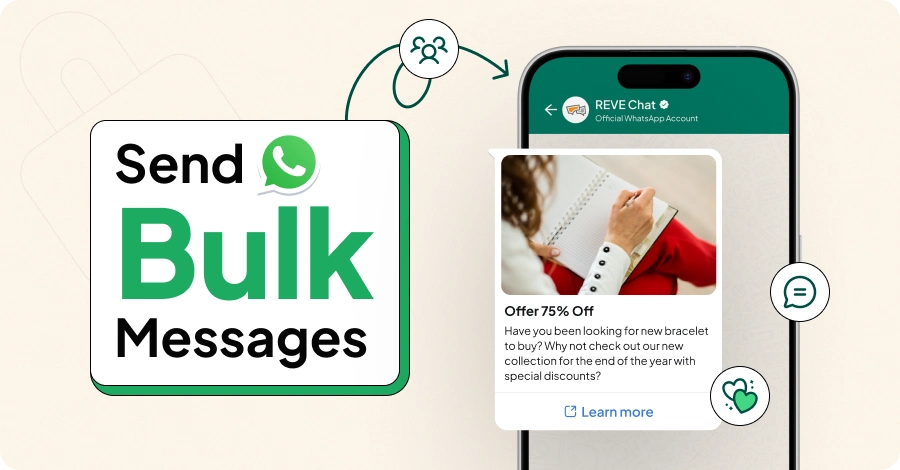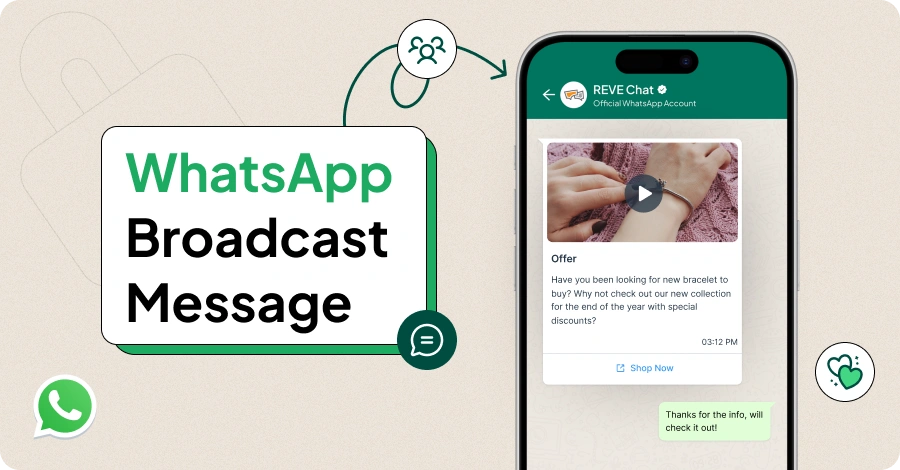Winning Customers with a Unique Value Proposition
- September 14, 2023
- 13 mins read
- Listen

Why should I purchase products from your brand? It is a question that frequently leaves me disappointed with the responses provided by sellers when they try to articulate their distinctive value in the market. Usually, I encounter two common issues.
Firstly, the answer often falls into a predictable pattern, such as “because we excel in customer service” or “because we genuinely prioritize your business.” In some cases, it’s even less compelling, with responses like “because we offer an integrated solution and seek collaborative partnerships in the market.”
These generic replies highlight a critical flaw in how many companies perceive their value proposition to potential customers, as they unintentionally position themselves as indistinguishable from their competitors.
The second issue lies in the fact that numerous companies compile an extensive catalog of value propositions intended for sellers to incorporate into every product pitch.
Although this list often encompasses a wide array of features and advantages, it becomes overwhelming as it contains so many elements. As a result, sellers typically end up utilizing only a small subset of these propositions in their presentations, rather than carefully selecting the most relevant ones for each customer. Consequently, this approach leads to sales presentations that fail to deeply connect with potential buyers.
To enhance your sales velocity, it’s important to convey value propositions that directly resonate with your customers, aligning with what the buyer perceives as a compelling reason to invest in your product. Let’s deep dive today into this topic, exploring the essence of customer value propositions and examining effective strategies for presenting them to your customers.
What is a Value Proposition: the Definition
Precisely, your value proposition serves as a concise description or demonstration of why a customer should choose to engage in business with you.
Your value proposition should encompass three key aspects:
- The commitment to provide specific outcomes or offerings to your customers.
- The advantages and gains that your customers can expect to enjoy.
- The rationale behind selecting your company over competing alternatives.
It’s important to note that there isn’t a one-size-fits-all method for crafting a value proposition. However, there is an important guideline to adhere to: Your business’s value proposition should be prominently displayed to website visitors as one of the initial elements they encounter when engaging with your company.
This entails positioning this essential information at the top of your website’s homepage, which is the section visible to visitors as soon as the page loads, prior to any scrolling down the page.
Furthermore, it’s essential to consistently reaffirm these messages across numerous, if not all, of the interactions your customers have with your brand along their journey.
If required, your value proposition should also encompass your unique selling proposition, which is the distinct element that differentiates you from all your competitors.
Value Propositions: Their Purpose and Impact
A value proposition is a unique and compelling statement that a company uses to communicate the specific benefits and value it offers to its customers and consumers. It serves as a promise to customers, highlighting what sets the company apart from competitors and why customers should choose its products or services to improve overall experiences. .
Possessing a distinctive value proposition generates added value for customers on behalf of the company. For example, before the advent of wireless headphones, customers were unaware of their desire for such a product. This not only aids businesses of all sizes in attracting investors, new customers, or clients but also contributes to customer retention and enhancing brand loyalty.
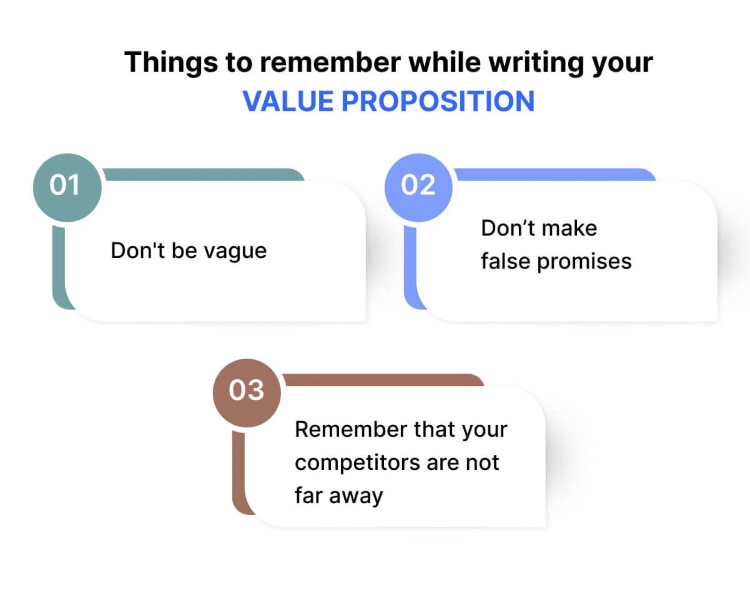
Elevating Your Value Proposition: Factors that Matter Most
A value proposition is fundamentally centered on the customer, emphasizing the advantages they can expect when they purchase your product or service. An effective value proposition revolves around establishing a link between the customer’s requirements and the seller’s offerings. Authentic value, substantiated by concrete benefits, can only genuinely emerge when there is a direct harmony between these needs and solutions.
In straightforward terms, a strong value proposition statement example provides a clear response to the buyer’s question: “What do I gain from this?” Here are three initial steps to help you craft your own.
Define the Customer’s Return on Investment
The benefit you offer to your buyers is shown through something called return on investment (ROI). While a general value proposition can’t give an exact ROI for every customer, it should clearly explain how your buyers will save or make money when they choose your product or service.
For instance, you can straightforwardly express a clear financial advantage for the customer (e.g., “Our product will increase your earnings” or “enhance your revenue,” etc.). It could also be a declaration of cost savings or cost prevention, as well as something else, like providing “peace of mind.”
Maintain Clarity and Simplicity
It’s important that you effectively communicate and emphasize your value proposition. Ensure that every mention of your value proposition clearly articulates the benefits of your product and the commitments your brand makes with absolute clarity. One effective way to ensure clarity in your value proposition is to examine and remove any industry jargon. Even if your customers are familiar with industry terminology, using jargon can make your message seem overly formal or appear as if you’re trying too hard to impress.
On the other hand, avoid being too vague, overly obvious, or clichéd in your value proposition. If you’re uncertain, seek feedback from trusted professionals outside your industry. If they find your brand promise confusing, it’s a sign that you should revise and simplify it.
Simplicity is an excellent indicator of clarity. The clearer your value proposition, the more effective it is (as long as it still clearly communicates the valuable benefits to the buyer). Aim for a value proposition that’s 20 words or fewer. Consider the clarity of each word as well. If they appear formal, rigid, or scholarly, seek simpler alternatives. In the end, your value proposition should never create more questions than it resolves.
Think from Your Customer’s Point of View
The effectiveness of a value proposition is also contingent upon how the customer perceives it. If the customer fails to comprehend or acknowledge the benefits of engaging with your company, even if the data demonstrates a significant return on investment, your value proposition has missed the mark. Perception shapes reality, and this frequently hinges on the complete customer journey during the purchase and utilization of the offered products or services.
To gain insights into customer perceptions of your value proposition, seek their feedback. This can be achieved through a straightforward survey or through informal conversations during customer interactions.
Additionally, consider reaching out to past customers or potential leads who didn’t convert to understand how they view the value of your product or service. If they opted not to make a purchase or discontinued their engagement with your company, it’s crucial to understand the reasons behind their decision. It’s possible that their choice was influenced by a perception that your solution didn’t offer sufficient value in comparison to a competitor.
Crafting a Compelling Value Proposition: Step-by-Step Guide
Crafting an effective value proposition is a fundamental skill for businesses seeking to captivate and engage their target audience. In a world filled with countless options and choices, your value proposition serves as the beacon that guides customers toward your offerings. It’s the art of conveying not just what you offer, but why it matters, and why it should matter to your customers.
In this guide, we will explore the intricacies of writing a compelling value proposition that resonates with your audience, compels them to take action, and ultimately propels your business toward success.
1. Understand Your Customer’s Main Issue
Although this will necessitate initial research efforts, you can expedite this aspect of developing your value proposition by engaging in discussions with various team members. Customer service representatives, marketing experts, and sales professionals can provide valuable insights into the issues your customers aim to address through the utilization of your product or service.
For instance, consider a scenario where your company offers subscription-based photo editing software that includes automated templates. Your target customer is searching for a cost-effective and user-friendly solution to edit various photos for his business. In this instance, your company’s product offerings could provide the remedy he is seeking.
2. Identify the Benefits
This stage can be as straightforward as creating a comprehensive inventory of every product in your lineup and outlining its primary advantage. The advantage should be succinct and center around addressing a specific customer requirement.
In the case of our photo edit software example, you would itemize each template, elucidate the benefit it offers, and clarify the reason a customer would find it essential.
3. Explain Why these Benefits Matter
Now, what would be the benefits here?
Applying the same example mentioned earlier, the value proposition could highlight that customers gain access to budget-friendly design templates, which would typically entail substantial costs, potentially saving them thousands of dollars.
4. Show How the Value Proposition Can Fix the Customer’s Problem
Next, connect the customer’s issue with the unique features that render your product or service valuable. Do these aspects harmonize? If they do, you’re prepared to enhance your value proposition to set your offerings apart from competitors. In case of misalignment, revisit the preceding steps until you pinpoint a genuine customer requirement and a practical solution your business provides to address that requirement.
5. Stand Out as the Best Choice for Your Solution
Ultimately, refine your value proposition to give it a distinctive edge. Is there a particular customer service aspect your business delivers that sets it apart from others? Do you provide supplementary services that come at an extra cost from other firms? These aspects can distinguish your value proposition from competitors, all while maintaining a keen focus on addressing the customer’s requirements.
6. Utilize a Framework to Aid in Brainstorming
Once you grasp the initial five steps, integrating them into value proposition templates becomes easier.
- Geoff Moore Method
Geoffrey Moore offers a structured framework that provides greater specificity in pinpointing industry categories and the valued benefits by customers. This results in a more precise formula for crafting a value proposition:
“For [target customer] seeking [X], our [product/service] falls within the [industry category], delivering [benefits].”
- Harvard Business School Method
According to Harvard Business School, the most effective execution of a value proposition occurs when it addresses the following inquiries:
“What does my brand provide?”
“What specific task does the customer enlist my brand to fulfill?”
“Which companies and products are in competition with my brand to fulfill this task for the customer?”
“What distinguishes my brand from its competitors?”
- Steve Blank Method
In Steve Blank’s approach, the emphasis shifts from highlighting the features directly to accentuating the benefits resulting from those features, all in a concise sentence. By adhering to this formula, you’ll establish a connection between the target market and their challenges with the solution:
“We assist (X) in accomplishing (Y) by means of (Z).”
Value Propositions: Real-Life Examples
In these examples, you’ll find real situations where customers benefit or face challenges, and how these companies address them within their value propositions.

Shopify’s value proposition can be summed up as: “It does everything you need in one place.” This addresses the basic needs and worries of new business owners who often find themselves overwhelmed. Shopify alleviates this anxiety by offering a helping hand, and providing comfort to visitors.
According to the company’s website, the platform is designed to assist customers “from initial sale to substantial growth.” It offers a comprehensive set of tools for launching, selling, marketing, and managing your business.
To reinforce this commitment, these four elements each have their dedicated pages in the website’s primary navigation. This enables users to easily delve into how Shopify can support them in every aspect of launching, operating, and expanding their businesses.
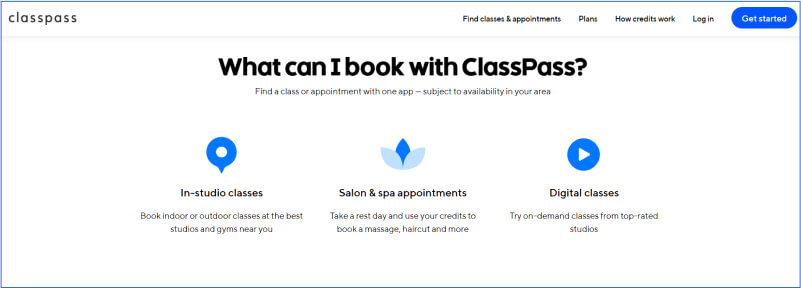
On their company homepage, ClassPass promptly presents the primary advantages of their business model:
- You’re not tied to just one gym or workout style.
- You can effortlessly select any gym or workout using the ClassPass app.
- You can salon and spa facilities.
This service caters to a particular need within the health and fitness sector: catering to individuals who find it inconvenient to restrict their fitness choices to a single place or gym type.
While you navigate through the homepage, you’ll discover additional enticing advantages and distinctive selling features, such as the opportunity to reduce drop-in rates and the option to access classes from the comfort of your home at no extra cost.
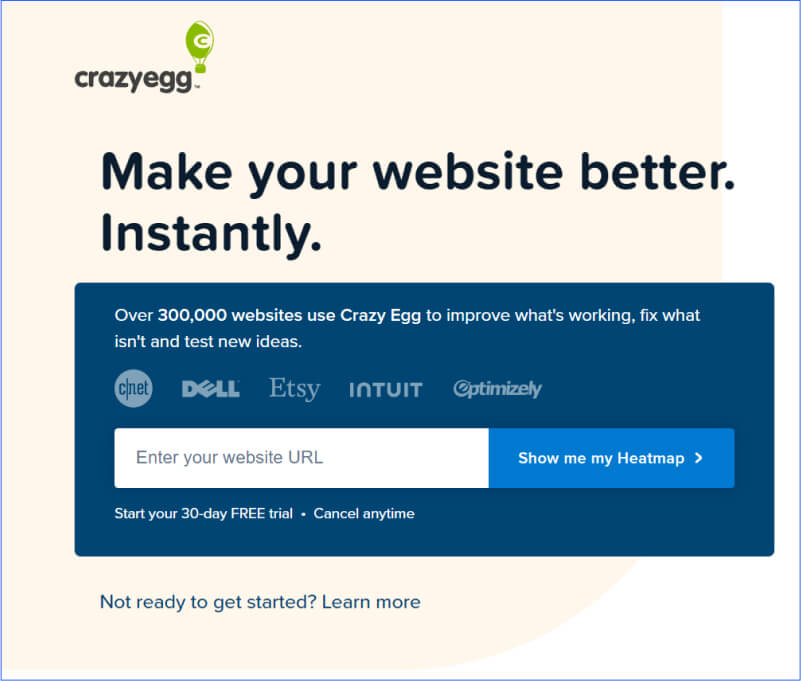
Crazy Egg is a platform for improving websites through features like heatmaps and A/B testing.
Right at the top of their homepage, they claim you can quickly enhance your website, which is quite appealing. It makes you wonder if they can really deliver on such a bold promise, and Crazy Egg does just that, substantiating their claim.
The following statement highlights that more than 300,000 customers utilize the platform and describes how they enhance their websites by optimizing what’s effective, rectifying issues, and experimenting with fresh ideas. This seamlessly leads to the offer of a 30-day free trial, giving you the chance to experience it firsthand.

Manitobah Mukluks is a unique online store. On their homepage, you’ll find out that they’re owned by Indigenous people, and their products are handmade by Indigenous artists who get all the money from sales.
The company shares its vision at the top of the webpage, aiming to create a strong brand that makes a positive difference in Indigenous communities.
Across their website, the Manitobah Mukluks team skillfully integrates the stories of their ancestors into their product line. This approach fosters a closer connection with visitors, resonating with those who seek a deeper and more meaningful connection with the brands they support.
Hardgraft

Hardgraft’s website is an exquisite representation of its core promise: “luxury lifestyle accessories with a grounded aesthetic.”
The headline also emphasizes that the company is guided by instinct, implying that its products seamlessly align with the lifestyle it serves. Their statement about using top-quality materials instills confidence in the reader, assuring them of the brand’s commitment to excellence. This exemplifies a succinct and impactful brand value proposition that maintains the luxurious image they aim to convey without unnecessary verbosity.
Discover Your Compelling Value Proposition
Albert Einstein’s wisdom remains applicable even a century later: “Aim not to achieve success, but rather to be valuable.”
When you pursue success relentlessly, you risk becoming one of those brands that repetitively injects the word “value” into every conceivable context, ultimately diluting its significance. By prioritizing the goal of being valuable, you demonstrate your worth naturally, without the need for constant verbal reinforcement. Instead of having an empty promise, you should have a meaningful statement with real value.
Crafting a value proposition statement is another opportunity to practice the “show, don’t tell” approach for writing your value proposition. Combine words that paint a vivid picture for your target audience. Utilize the strategies, suggestions, structure, and illustrations in this article to shape your distinct value proposition.


